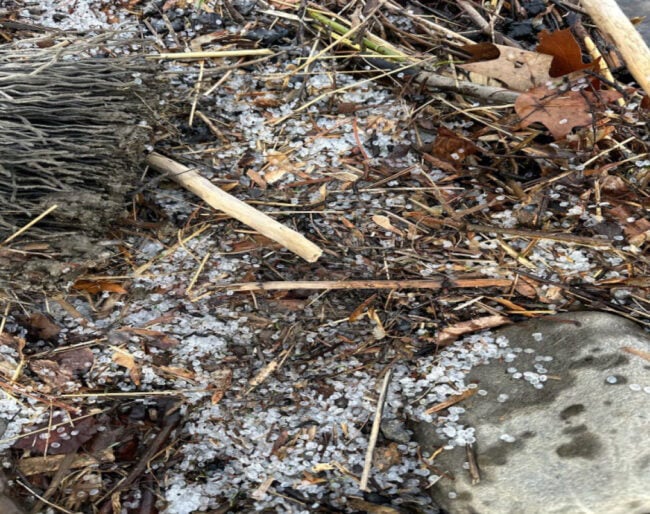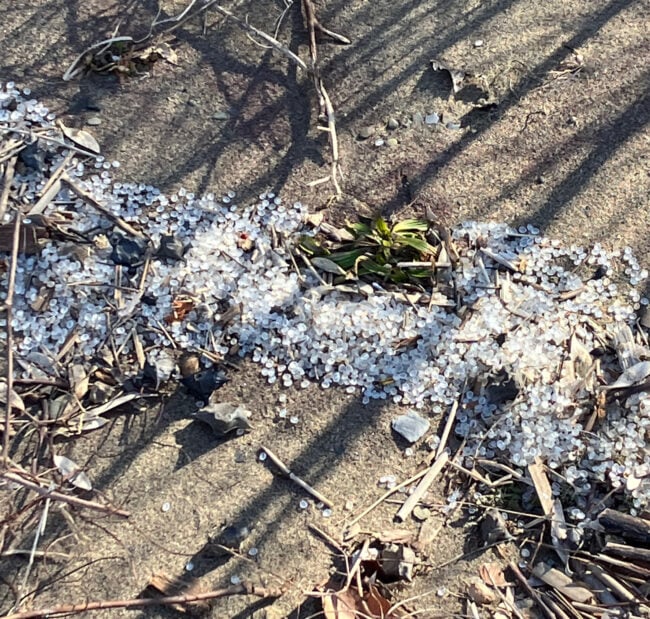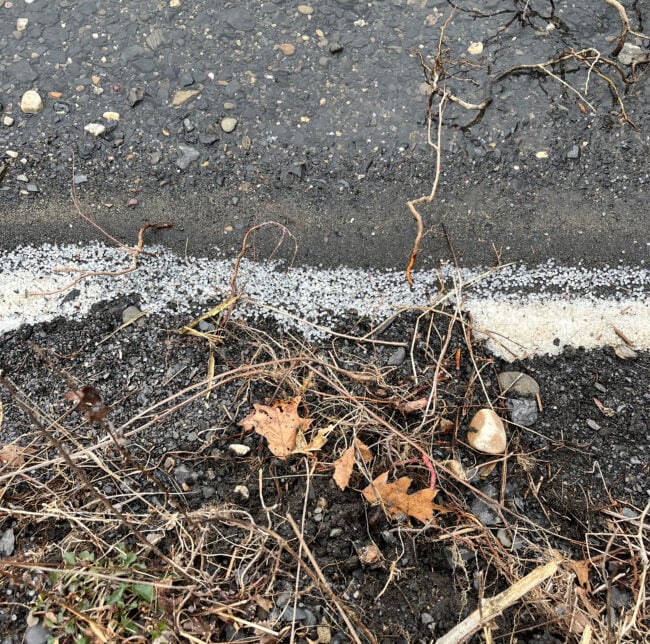How to identify and report plastic pellets from recent railroad spill

Examples of polypropylene plastic pellets accumulated on land. Photo: Berkshire & Eastern Railroad
View more images on our Flickr site
People who see small plastic pellets along the banks of the Hoosic or Hudson Rivers should report them to the railroad company involved in the recent derailment of a train that spilled the plastic into the Hoosic River February 7.
The plastic pellets, known as nurdles, are whitish or clear and about the size and shape of orzo. If you see them along the banks of the Hoosic River between Valley Falls and where it meets the Hudson River, or along the Hudson south of there, report them to Berkshire & Eastern Railroad at 888-413-4113 or [email protected].
To see examples of nurdles spilled in the Hoosic River derailment, see this factsheet developed by the company.


Examples of polypropylene plastic pellets accumulated on land and at waters edge. Photos courtesy New York State Department of Environmental Conservation
The company’s contractor, Miller Environmental, will respond to reports. If you collect any pellets, the Department of Environmental Conservation (DEC) recommends that you dispose of them in regular household trash.
Despite the deployment of booms that have prevented the downstream flow of many nurdles, and other actions taken at the site of the derailment, nurdles have been observed at several points along the Hoosic River, and as far south on the Hudson River as Athens, roughly 60 miles downstream of the spill. This highlights the reality that it is typically not possible to recover harmful substances that have spilled into waterways. The only effective way to prevent pollution is to prevent spills.
If you see wildlife that may have ingested and been harmed by the pellets, contact DEC at (518) 357-2045 or [email protected]. As of mid April, DEC had not documented harm to wildlife.
The polypropylene plastic pellets are derived from petroleum, and nurdles such as these are transformed into plastic packaging and other plastic products. In addition to nurdles, the derailment resulted in rapeseed oil (also known as canola oil) and feed corn being spilled into the Hoosic. In all, 10 cars derailed. DEC has reported limited to no impacts from the rapeseed oil and corn spills, which were more limited and/or affected primarily the shoreline but not the river.
The derailment and spill highlight the ongoing risks of pollution from industrial shipping on and along the banks of the Hudson and its tributaries. The state of railroad infrastructure, and inadequate rules around braking technology, allowable speeds, train length and weight, and worker oversight have contributed to a series of derailments around the country, including the recent derailment in East Palestine, OH, which also involved precursor substances used in the manufacturing of plastics.
Fossil fuel companies have ramped up their manufacturing of plastics in part to find new uses for fossil fuels, as governments take action to reduce fossil fuel use in transportation and electric generation. The Hoosic River spill also highlights some unique gaps related to governmental authority to respond to spills of petroleum-derived products like plastics, versus petroleum itself.
Riverkeeper will continue to monitor the cleanup of this spill, along with our partners, Hoosic River Watershed Alliance, and advocate for policies that better protect our rivers and communities from derailments and spills of hazardous materials transported by rail.
